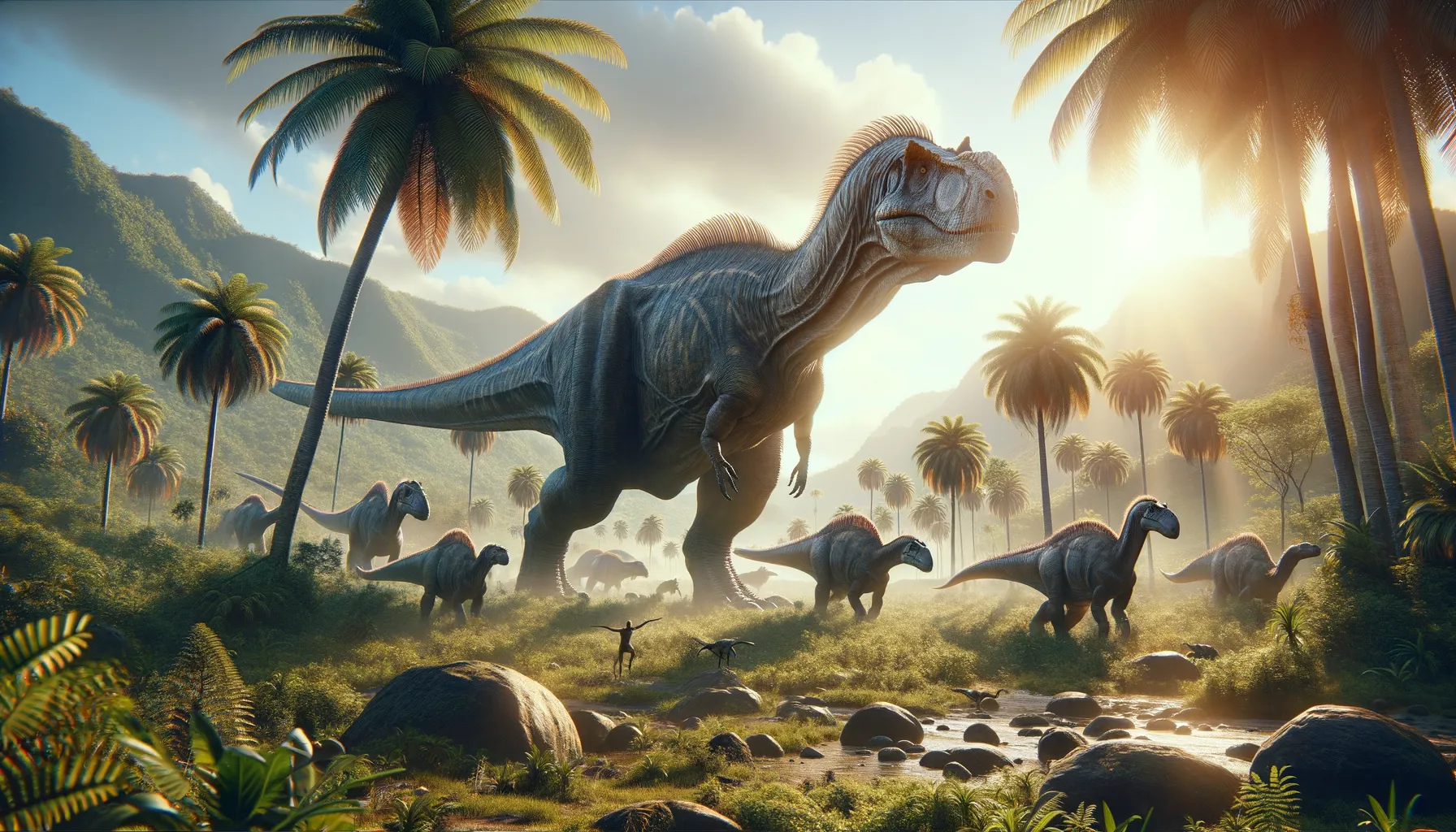
Baurutitan
A gentle giant from the Late Cretaceous.
Period
Cretaceous
Length
Estimated length of around 20 meters.
Height
Reached up to 12 meters tall.
Weight
Weighed approximately 20 to 25 tons.
Baurutitan was a massive herbivorous dinosaur that roamed the earth during the Late Cretaceous period. As a titanosaur, it had an enormous body with a long tail, and it likely moved in herds for protection against predators. Fossils have primarily been found in Brazil, providing valuable insights into the rich ecosystem they once inhabited. Baurutitan is emblematic of the diversity and adaptation of dinosaurs in the Southern Hemisphere.
Diet
Baurutitan was a herbivore, feeding primarily on vegetation such as ferns, cycads, and conifers. Its long neck would have helped it reach high branches that other herbivores could not access.
Hunting
As a herbivore, Baurutitan did not hunt other animals for food. It relied on its massive size to deter predators and would have spent much of its time feeding on available plant resources.
Environmental challenges
Baurutitan faced various environmental challenges, such as fluctuations in climate that could have affected food availability. Being large, it required significant amounts of vegetation to sustain itself, especially during dry spells. Predators like theropods posed a constant threat, prompting Baurutitan to stay in groups for added protection. The shifting landscapes during the Cretaceous period required adaptability to new territories.
Speed
Slow-moving due to its massive size.
Lifespan
Estimated lifespan of around 70-80 years.
First discovery
Discovered in Brazil in the year 2000.
Fun Facts
- Baurutitan is a type of sauropod dinosaur, known for its long neck, which lived approximately 70 million years ago during the Late Cretaceous period.
- It was discovered in Brazil, and its name means 'Bauru Titan,' referring to the Bauru Group geological formation where its fossils were found.
- Baurutitan was a herbivore and relied on its great height to reach vegetation high up in trees.
- While not as well-known as some other sauropods, it adds valuable information about the diversity of titanosaurs in South America.
- Only a few bones of Baurutitan have been found, making it a bit of a mystery creature in the dinosaur world.
- Baurutitan is considered a relatively small titanosaur, although it would still have been enormous compared to most animals today.
Growth and Development
Baurutitan likely experienced a rapid growth phase shortly after hatching to reach a size that could deter predators. As it matured, its growth rate would have slowed down, focusing energy on maintaining its large body size. Developmental studies suggest that young titanosaurs traveled with older individuals, learning and gaining protection from the group.
Habitat
Baurutitan inhabited lush floodplains and forested areas, which provided ample vegetation for feeding. These habitats offered water sources crucial for hydrating such a large creature. The warm, humid climate of the region during the Cretaceous supported diverse plant life. Seasonal changes may have driven Baurutitan to migrate to areas with more food.
Interaction with other species
Baurutitan coexisted with a variety of other dinosaur species, including predatory theropods and smaller herbivores. It likely had little competition for food due to different feeding heights. Communication within groups could have included low-frequency vocalizations or visual displays. Its primary interactions with other species revolved around avoiding or deterring predators.
Natural lifespan
Baurutitan had a natural lifespan of about 70-80 years.
Reproduction
Baurutitan reproduced by laying eggs, likely in carefully chosen locations to ensure their safety. Nests were dug in the ground, and multiple eggs were laid in each clutch. Parental care was likely minimal, with young hatchlings being left to fend for themselves. Fossils indicate that these sites were selected to maximize exposure to the sun for incubation.
Social behaviour
Baurutitan is thought to have lived in herds, which provided protection and social interaction. These herds may have moved together to find food and water sources, demonstrating social organization. Younger individuals learned survival techniques by observing adults. The tight-knit group dynamics played a crucial role in the survival and success of its members.
Fossil locations
Fossil remains of Baurutitan have been primarily excavated in Brazil, particularly in the Bauru Basin. These findings have been crucial in understanding titanosaur distribution in South America. Excavations have revealed various parts of the skeleton, contributing to reconstructing its appearance and lifestyle. The discovery of these fossils has provided insights into the diverse ecosystems of the Cretaceous period in the region.
